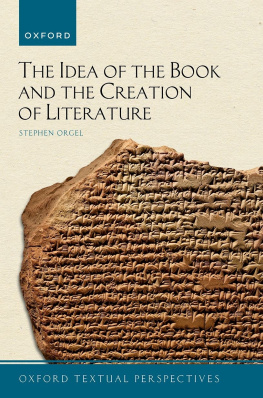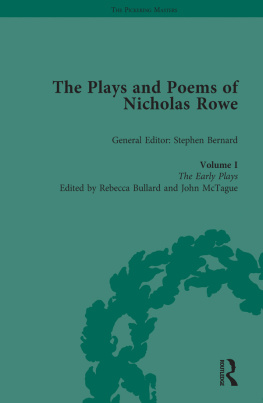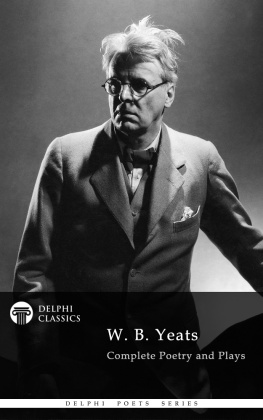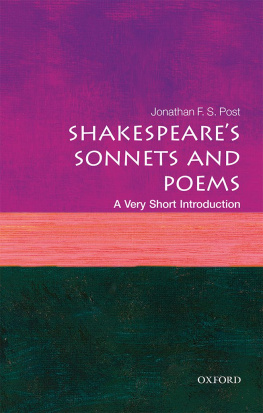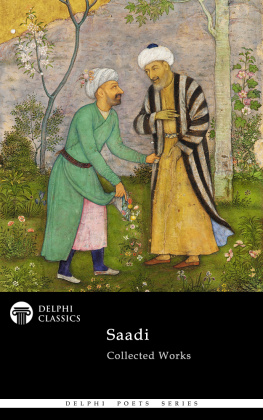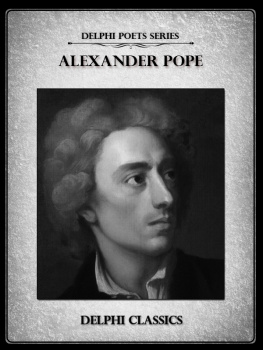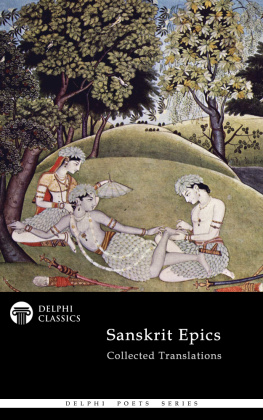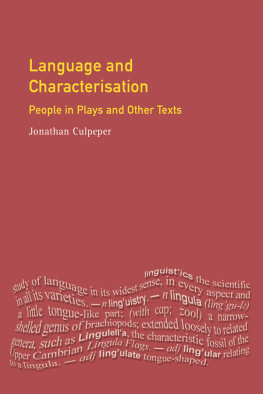Oxford Textual Perspectives
The Idea of the Book and the Creation of Literature
General Editors
Elaine TreharneGreg Walker

Great Clarendon Street, Oxford, ox2 6dp , United Kingdom
Oxford University Press is a department of the University of Oxford. It furthers the Universitys objective of excellence in research, scholarship, and education by publishing worldwide. Oxford is a registered trade mark of Oxford University Press in the UK and in certain other countries
Stephen Orgel 2023
The moral rights of the author have been asserted
First Edition published in 2023
Impression: 1
All rights reserved. No part of this publication may be reproduced, stored in a retrieval system, or transmitted, in any form or by any means, without the prior permission in writing of Oxford University Press, or as expressly permitted by law, by licence or under terms agreed with the appropriate reprographics rights organization. Enquiries concerning reproduction outside the scope of the above should be sent to the Rights Department, Oxford University Press, at the address above
You must not circulate this work in any other form and you must impose this same condition on any acquirer
Published in the United States of America by Oxford University Press
198 Madison Avenue, New York, NY 10016, United States of America
British Library Cataloguing in Publication Data
Data available
Library of Congress Control Number: 2022937325
ISBN 9780192871534 (hbk.)
ISBN 9780192871589 (pbk.)
ebook ISBN 9780192699404
DOI: 10.1093/oso/9780192871534.001.0001
Printed and bound in the UK by TJ Books Limited
Links to third party websites are provided by Oxford in good faith and for information only. Oxford disclaims any responsibility for the materials contained in any third party website referenced in this work.
For John Mustain
Series Editors Preface
Oxford Textual Perspectives is a series of informative and provocative studies focused upon texts (conceived of in the broadest sense of that term) and the technologies, cultures, and communities that produce, inform, and receive them. It provides fresh interpretations of fundamental works, images, and artefacts, and of the vital and challenging issues emerging in English literary studies. By engaging with the contexts and materiality of the text, its production, transmission, and reception history, and by frequently testing and exploring the boundaries of the notions of text and meaning themselves, the volumes in the series question conventional frameworks and provide innovative interpretations of both canonical and less well-known works. These books will offer new perspectives, and challenge familiar ones, both on and through texts and textual communities. While they focus on specific authors, periods, and issues, they nonetheless scan wider horizons, addressing themes and provoking questions that have a more general application to literary studies and cultural history as a whole. Each is designed to be as accessible to the non-specialist reader as it is fresh and rewarding for the specialist, combining an informative orientation in a landscape with detailed analysis of the territory and suggestions for further travel.
Elaine Treharne and Greg Walker
Preface
This book is based on a course I created at Stanford in the early 1990s in the history of the book. The course was initially designed to tempt students away from their computers and into the library, and was taught in the Rare Book Room, first in collaboration with the Classics librarian the late David Sullivan, and subsequently, for more than two decades, with John Mustain, the Curator of Rare Books. It quickly became apparent that the siren call of the Internet was not the greatest impediment to historical scholarship facing modern students: their fascination with old books and excitement at being able to handle them were palpable. But a significant component of the course involved comparing works in modern editions with the original texts those versions purported to represent, and we all soon realized how much was necessarily lost, or sometimes misrepresented, even in what were nominally facsimiles, and even in the photographic reproductions of the indispensable Chadwyck-Healey database Early English Books Online (EEBO). The point was not to condemn these changes, but to be aware of them and to learn how to take into account the inevitable transformations of history.
One frequently hears it claimed that with the availability of EEBO, which includes substantially every book published in England or for the English market before 1700, rare book libraries are no longer necessary for the study of English literature. This claim is simply inaccurate: to begin with, English Renaissance libraries were by no means limited to books published in England, which in fact comprised only a very small part of the literary resources available to early modern British writers. With a readership for much of whom Latin was a second language, most works of philosophy, history, and scienceindeed most reference workswere in Latin and published on the continent. Moreover, EEBOs photographs were digitized from microfilms, and they reproduce impeccably what is on the microfilms, including, of course, all spots, blotches, and other defects. Since the microfilms are in black and white, the digitizations render all marks as tonally equivalent. A handwritten correction is not distinguishable as such, and an ink spot or a flyspeck is easily taken for a mark of punctuation. Nor do the digitized microfilms provide any information beyond that revealed by the typography: there is no way of examining the paper to see watermarks and chain lines, which are essential for understanding how the book is put together and for detecting inserted sheets and recognizing forgeries. And of course, on the computer all books are the same size: the heft of a folio and the fragility of a duodecimo are not reproducible.
John Carters ABC For Book Collectors, in its several revisions since 1952, has been an indispensable resource. Dennis Duncan and Adam Smyths excellent collection Book Parts, which codifies the idea of the material book, unfortunately appeared too late to be of use in the course, but it would have been required reading, and I am indebted to it at several points here. I am happy to be able finally to acknowledge many years of conversations with the late Marion Trousdale, a superb scholar and dear friend, who introduced me to the poetry of Abraham Fraunce. For help on particular points I am indebted to Brenda Silver, David Halperin, Angus Gowland, and the late David Sachs. Benjamin L. Albritton, Stanfords current Curator of Rare Books and Classics Librarian, has been unfailingly generous and helpful. I am grateful to Elaine Treharne and Greg Walker, the general editors of Oxford Textual Perspectives, for their enthusiasm for the project, to my editors Hannah Doyle and Emma Varley for their expert guidance, and to the two anonymous and genial Press readers, most of whose suggestions for revision I have followed. I have learned much from many years of exemplary students in the class, of whom I can name only a few: Jonathan Fetter-Vorm, Stephanie Adams-Santos, Robin Whitson-Burns, Ryan Zurowski, Randy Johnson, Garth Kimbrell, Bridget Whearty, Ian Bickford, Britten Heller, Luke Barnhart, Brian Umana, Rachel Hamburg, Jason Vartikar, Bojan Srbinovski, Christina Zempel, Killeen Hanson. The dedication to John Mustain acknowledges both a long and fruitful collaboration and a great deal of admiration and affection.

